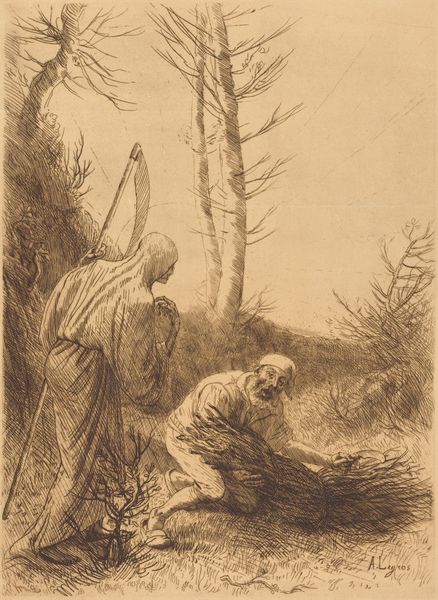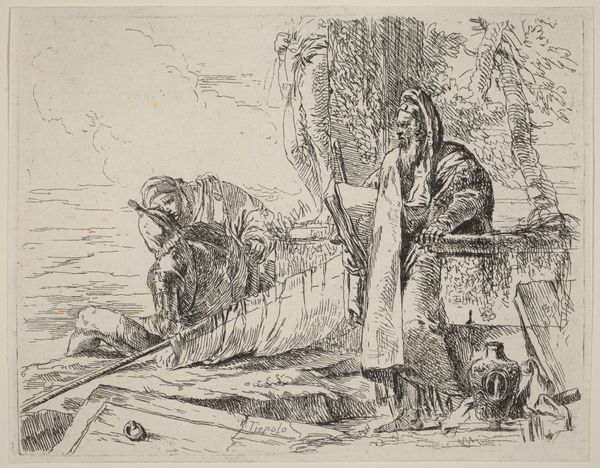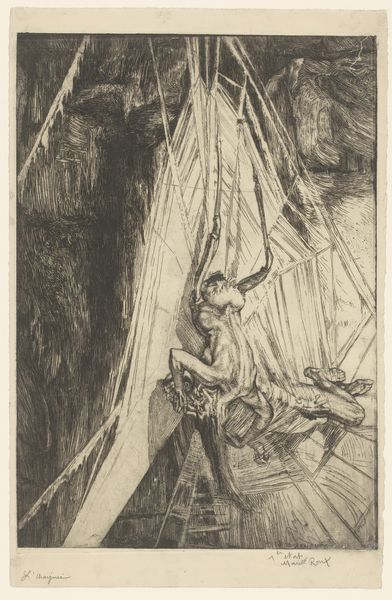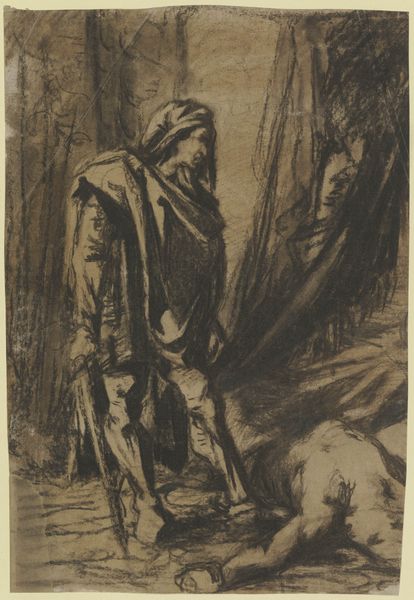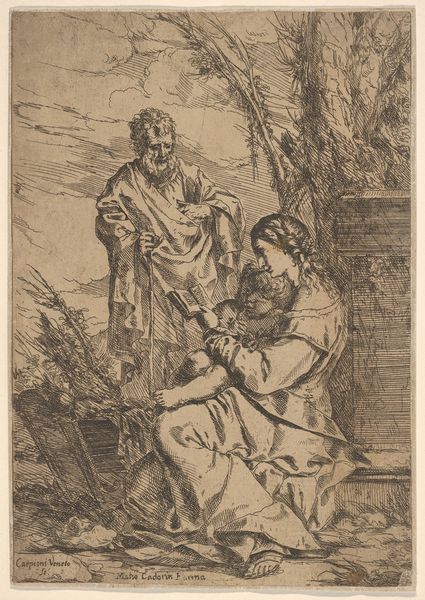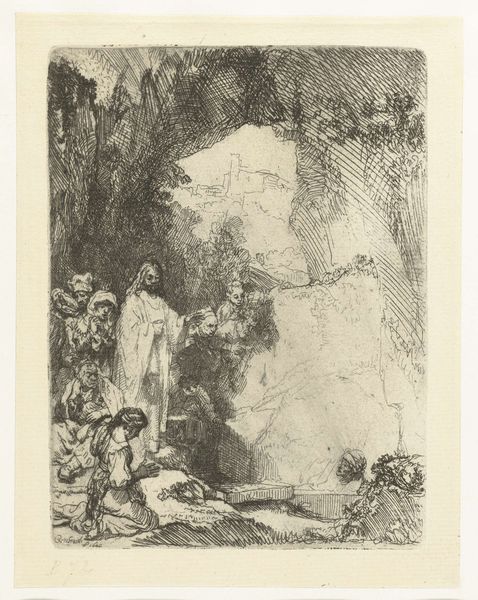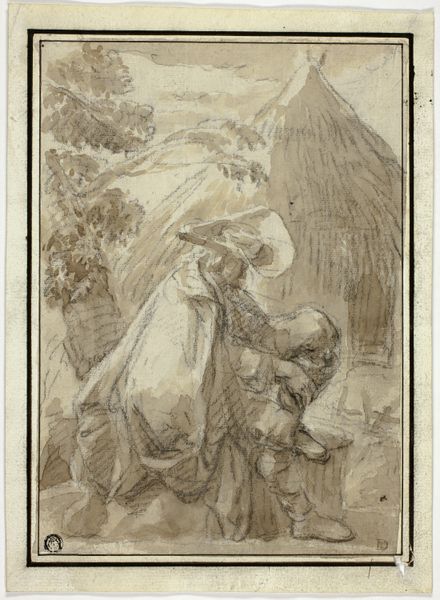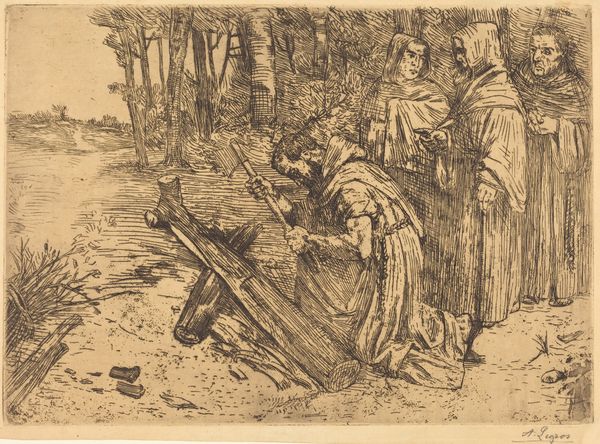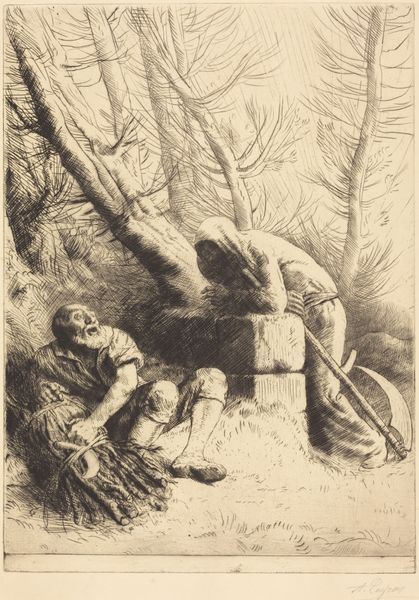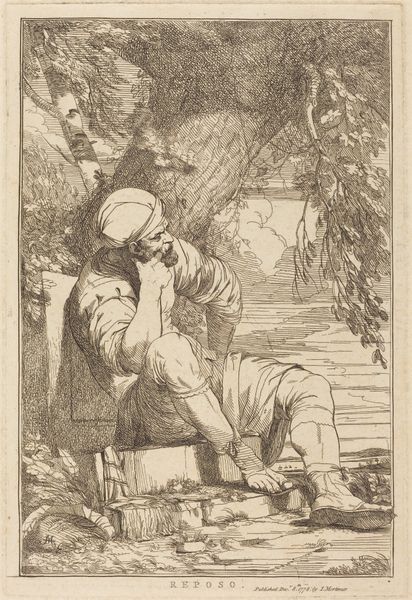
Death and the Woodcutter, 3rd plate (La mort et le bucheron)
0:00
0:00
drawing, print, etching, ink
#
drawing
#
ink drawing
#
narrative-art
# print
#
etching
#
landscape
#
etching
#
figuration
#
ink
#
romanticism
#
symbolism
Copyright: National Gallery of Art: CC0 1.0
Curator: Alphonse Legros, though undated, created this etching and ink drawing called “Death and the Woodcutter, 3rd plate.” Editor: It has an undeniably somber mood, with its muted tones and the stark contrast between the figures and the wispy, desolate landscape. Curator: Indeed. Legros created this narrative in the wake of the Franco-Prussian War, tapping into a widespread sense of societal vulnerability and questioning class structures. The woodcutter, bent and weary, confronts Death, a scene drawn from folklore tradition. It's about labor, poverty, and the inevitability we all face, irrespective of status. Editor: The composition itself directs the gaze, doesn’t it? The bowed posture of the woodcutter mimics the arch of Death's scythe, suggesting a cyclical structure, a mirroring. And then there’s that single ray of light piercing the gloom, offering what…hope? Or perhaps a reminder of a world indifferent to suffering? Curator: Or consider how Legros, by choosing such a classic fable, places individual suffering within a larger context of enduring social inequalities. The woodcutter isn't just facing Death; he's facing a system that has ground him down, perhaps longing for release. We should note the relevance to ecocritical discussions; nature does nothing to save him here. Editor: Legros' technical mastery is obvious. The layering of lines in the printmaking creates depth and texture—you can almost feel the rough bark of the tree and the coarse fabric of the woodcutter's clothes. See, too, how line quality defines the ethereal presence of death. The rendering is critical. Curator: This piece continues to resonate precisely because it doesn't offer easy answers, demanding engagement with its themes and prompting discourse around power, class, and the shared human destiny. Editor: Ultimately, the artist uses formal properties to lead the viewer to recognize life's stark realities, which is, to me, an elegant accomplishment.
Comments
No comments
Be the first to comment and join the conversation on the ultimate creative platform.
